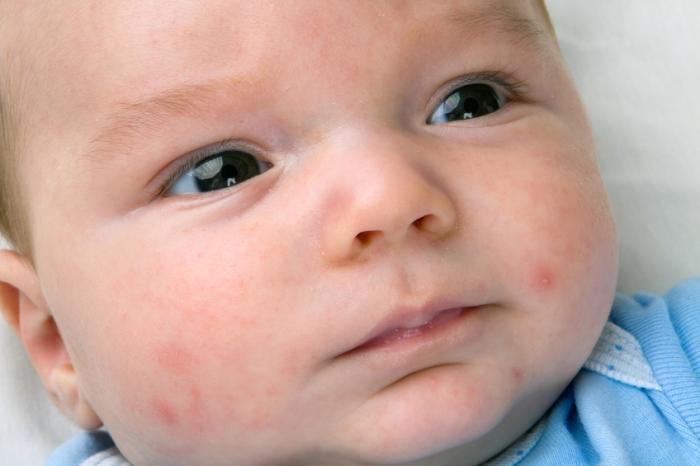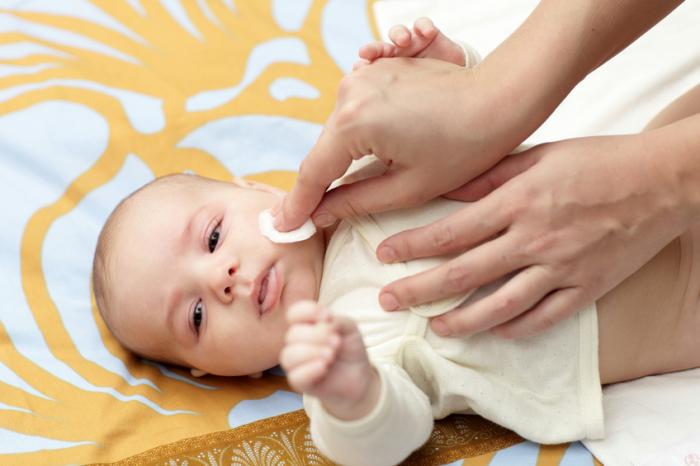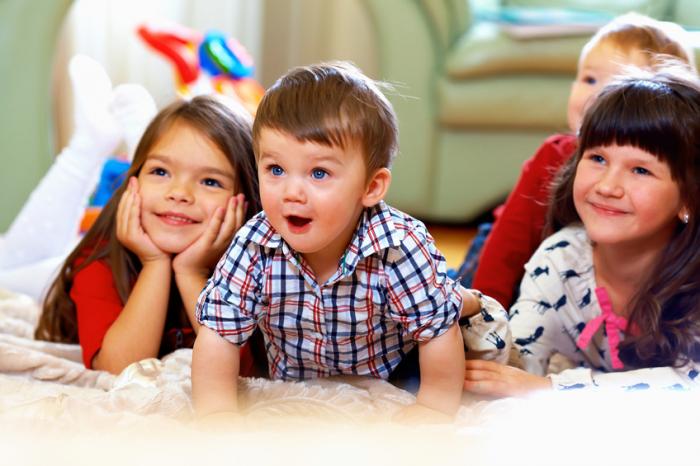Parents may think that they will only be dealing with acne during their child’s teen years, but no. Some parents may just get a quick glimpse into the teen years as soon as their new baby comes home.
Many babies will experience a bout of baby acne. Typically, acne in babies is nothing to be concerned about.
In most cases, baby acne causes red or white bumps on the cheeks, nose, forehead, chin or the baby’s back.
Contents of this article:
- Why do babies get acne?
- Symptoms of baby acne
- Treatment for baby acne
- Other conditions that affect babies
Fast facts about acne
- The main factors that cause acne are skin oil, dead skin cells, bacteria, and clogged pores
- Baby acne does not usually cause scarring
- Baby acne usually goes away without needing any treatment
Why do babies get acne?
In order for the skin and hair to stay lubricated, the many oil glands within the skin secrete an oil called sebum. If sebum becomes trapped and forms a plug within the hair follicles, acne can occur due to the growth of bacteria.

Many babies will get acne, but doctors are uncertain what causes it to appear.
If the hair follicle becomes infected with bacteria, the area can become inflamed. This results in a pimple forming – a raised red spot with a white center.
Acne is most likely to appear on areas of skin that have the most oil glands. These areas are on the face, neck, back, shoulders, and chest.
Adult acne can be made worse by factors such as medication, diet, and stress. These factors may not have much of an effect on babies, however.
It is not entirely clear why babies get acne. Experts believe that maternal hormones play a role, leading to oil gland problems and blemishes.
In addition to hormonal causes, some medications taken either by the mother during breastfeeding or by the infant may lead to the development of acne. Skin care products may also be to blame. At times, infants can have a negative reaction to certain skin care products, such as those containing oils.
Acne in most infants goes away after a few weeks. However, some infants can experience acne for more than 6 months. Acne in babies is not a scar-forming condition.
Symptoms of baby acne
Baby acne can be confused with other skin conditions that are discussed below. It typically presents as small, red, or white bumps that may be present on various parts of a newborn’s skin.
Baby acne most commonly appears on the cheeks, chin, nose, and forehead. At times, it can appear on the baby’s back. Worsening symptoms of baby acne can occur with heat, fussiness, and skin irritation.
Treatment for baby acne
Baby acne typically goes away on its own. However, there are some skin hygiene tips that parents can follow for their baby:

Parents can cleanse the skin affected by acne with water, but should avoid soaps, lotions, or oils.
- Cleansing the skin affected by acne one to three times per day with water only
- Avoiding the use of soaps, lotions, or oils on these areas of skin
- Patting the baby’s skin dry after cleansing
- Not applying over-the-counter adult acne or skin care products to the baby’s skin
- Applying a dab of breast milk to the area affected with acne – this may encourage skin healing
As with acne in adults, it is important to avoid picking, squeezing, or scrubbing areas affected with acne. Doing so can make the acne worse, possibly leading to infection or scarring by damaging the skin.
Some babies may benefit from using a non-oily lotion. Parents should stop using this if the appearance of the skin gets worse, however.
At times, a medicated cream or other treatments may be recommended by the child’s pediatrician. Parents should speak with a doctor if they are concerned that their baby’s acne may need evaluation and treatment.
When to see a pediatrician
Treatment is not usually needed for baby acne. However, it is important for parents to speak with their baby’s pediatrician if they notice:
- Signs of infection – redness, swelling, or discharge
- Possible signs of eczema – patches of red, dry, and flaking skin
- Any other skin concerns
Other skin conditions that affect babies
At times, a baby may have other skin conditions unrelated to baby acne. Other common skin conditions in infants include:
- Milia: This skin condition is marked by small, white bumps.
- Heat rash: Baby heat rash can cause skin itching and baby fussiness. It often appears on the legs, arms, upper chest, and diaper area alongside moist red bumps that are small in size.
- Diaper rash: Diaper rash is present on the skin covered by diapers, causing red and irritated skin.
- Cradle cap: Cradle cap appears on the head, eyebrows, and upper body as red bumps with yellow flaking skin.
- Eczema: Most commonly, eczema causes patches of dry, flaking, and red skin that may also have fluid-filled pimples. Most outbreaks of eczema appear on the cheeks and scalp. Some progress to areas with creasing, such as the elbow and knee creases.
Parents should speak with their child’s pediatrician if they have any concern about the appearance of their child’s skin. Evaluation and treatment may be necessary in some cases.



